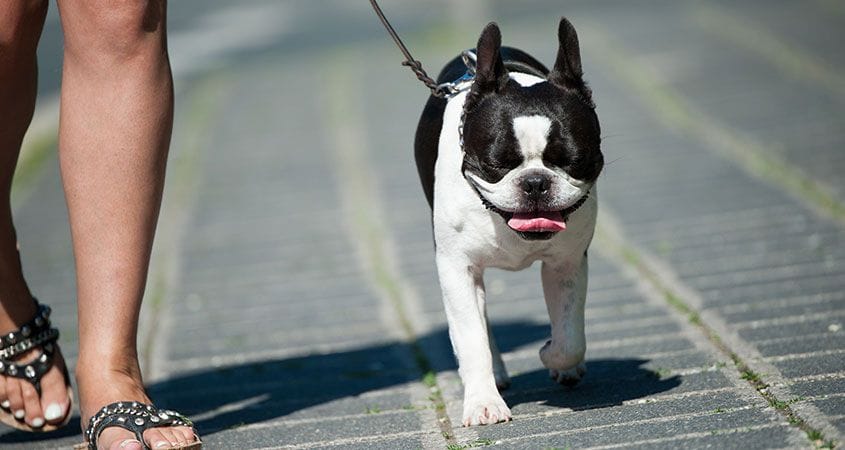There are lots of expressions in many languages that involve dogs in a metaphorical way. “A barking dog seldom bites,” for example, really means the same thing as “all talk and no action.” “Let a sleeping dog lie,” which is probably a good idea when taken literally, figuratively means to not bring up an old argument.
Then there are things that people say about dogs that are not true — for example, a dog does not age seven years for every human year; the actual calculation is a little more complicated. Here are the top twelve myths about dogs, debunked.
- Certain dog breeds are more aggressive than others
Myth. While larger breeds can be more dangerous if they’re aggressive, any breed can show aggression toward other dogs or humans. It isn’t the breed that’s the cause, but rather the way the dog is brought up and treated by humans.
- My dog runs in the yard all day, he doesn’t need a walk
Myth. The importance of the walk is that it imitates the way a dog pack works together — by migrating through their territory toward a goal, which is usually food and water.When your dog runs around in the yard, he may be burning off energy, but it’s unfocused. The end result is that he may actually have more anxious or nervous energy after playing in the yard all day.
- You can’t teach an old dog new tricks
Myth. This old adage has some truth to it when used to refer to humans, who can become very set in their ways with age, but dogs aren’t like that. A dog is ready to learn new tricks at any age, and teaching your old dog new tricks is a great way to help keep her mind sharp. Teaching a dog tricks at any age is perfect for giving them discipline.
- A wagging tail means a happy dog
Partly a myth. A wagging tail can indicate that a dog is happy and friendly, but it really depends on how the dog is wagging his tail. Studies have shown that when a dog wags his tail to his right—to the left as you’re facing the dog—it means he wants to approach and is friendly. However, when he wags his tail to his left, it’s a warning to back off.Dogs can tell the difference and read the message, and when one dog sees another wagging to his left, this will usually cause them to become anxious and move away.
Tail position is also important. If the tail is down, the dog is submissive and possibly anxious. If it’s horizontal, then the dog is calm and happy. If the dog’s tail is vertical, though, this is another major warning to stay away.
Finally, speed is an indicator of the dog’s energy level and mood. A broad sweep of the tail that almost wags the dog with it is an indicator of happiness; tiny, rapid motions that almost make the tail look like it’s vibrating are another warning sign.
- My dog goes bonkers when I get home because he loves me
Myth. That excitement you’re seeing isn’t happiness to see you. It’s a dog that has too much pent-up energy and now has an excuse to let it go. Jumping, spinning in circles, or vocalizing are all things the dog does to try to calm themselves down. Giving affection when the dog is like this just reinforces the behavior, and can lead to things like separation anxiety or destroying things when you aren’t home.
- My dog hates the neighbor’s dog
Myth. If they bark at each other through the fence, they’re each just claiming their territory, but there’s nothing personal about it. Excitement and barking can also indicate that they really want to meet each other, and are frustrated by the barrier between them. This is another time to pay attention to the body language. Just as all tail-wags are not friendly, all barks are not aggressive.If your and your neighbor’s dog have met and either didn’t get along well or got into a fight, it doesn’t mean that they’ll now hold a grudge forever. Dogs aren’t like that — but people can be. If we’re the ones holding onto the negative emotions after a bad encounter like that, then we’re the ones triggering the behavior when the dogs meet again.
The best solution is for you and your neighbor to take your dogs on a pack walk together, with the dogs on the outside. Once the humans involved can learn to relax in the situation, the dogs will either connect with each other or ignore each other.
- My dog is social, she doesn’t growl at visitors she just hides under the furniture
Myth. People sometimes think that “antisocial” is the same as aggressive or defensive, but there are other ways for a dog to be antisocial, and this is one of them.If your dog is hiding from visitors or otherwise avoiding them, this behavior is just as antisocial as the dog that growls or nips at them. In these cases, teach your visitors to follow “no touch, no talk, no eye contact” when they come over, and to continue to ignore the dog if she comes to investigate. In this way, she will gradually learn to trust your guests.
- After my dog has a litter, she can finally get spayed
Myth. Unless you intend to breed your dogs, they should be spayed before they go into their first heat. Your veterinarian can tell you the best age for your particular breed, but responsible Pack Leaders will take care of this at the first opportunity. Spaying a female before six months almost completely eliminates the risk of breast cancer later in life.
- The best way to cool off a dog is by pouring water on his head
Myth. Pouring water on your dog’s head is the best way to overheat him. Dogs cool off by wetting their chests and stomachs.If you’ve ever seen a dog at the park “digging” at the water in the kiddie pool, this is exactly what he’s doing — splashing water on the bottom of his body, where it will do the most good.
Wet fur is an insulator, so it holds heat in on the top of your dog. Since dogs tend to have the least or thinnest fur on their chests and stomachs, this is the most effective way for them to cool off.
- I can’t correct my dog’s separation anxiety, that’s just her personality
Myth. While some dogs may be more inclined to become anxious or nervous when their pack is not around, how you behave around the dog, particularly when coming and going, has a big effect on how he behaves when you’re not home.You should never leave when the dog is in an excited, energetic state. Drain his energy first with a long walk. Also teach him the “go to your place” command and put him there while you’re getting ready to leave — his place can be his crate, his bed, or a corner of the room.
The state of mind your dog is in is the one he’ll stay in while you’re gone. It’s up to you to bring him to a calm, submissive state before you leave.
- My dog is impossible to walk
Myth. You may be having difficulty walking your dog now, but the problem is on your end of the leash. There are steps you can take to master the walk.If the dog is showing reluctance to go on the walk at all, enlisting the help of a friend and their dog is a good way to bring yours out of her shell. You can also use treats to lure a reluctant dog forward, but don’t give the reward until she has walked a good distance.
If your dog is leading you on the walk, you need to train her to stay next to or behind you. You can do this by blocking her with your body, or carrying a cane or walking stick and using it to claim the space next to you. Keep the leash short but loose, and most of all stay relaxed. Tensing up on the leash just tells your dog to be alert for trouble.
- Dogs are jealous
Yes and no. Studies have shown that dogs can exhibit the signs of jealousy, but it’s a direct reaction to the moment and not something that they hold onto. In one study, when a dog’s owner showed affection to a stuffed dog that moved and made noises, the dog would try to get in between them or sometimes even nip at the fake; reactions they did not show when the owner did the same thing with a different object, like a book.However, dogs have no trouble sharing a person’s affection — the human involved just has to invite both dogs into their personal space. A jealous person (or animal) cannot share affection. So, while dogs can show signs of jealousy, it isn’t a permanent emotion that they hold onto once they’ve felt it for another dog.
What myths about dogs have you heard or experienced? Share them in the comments.











